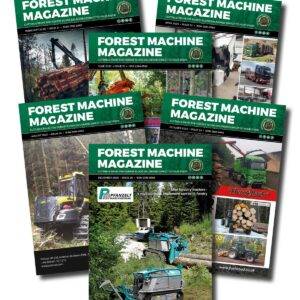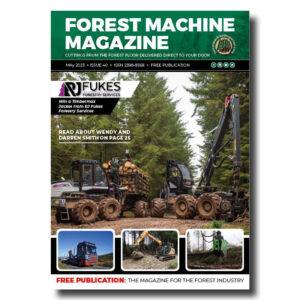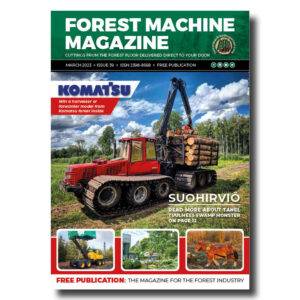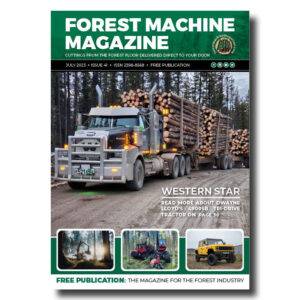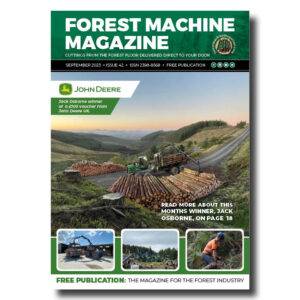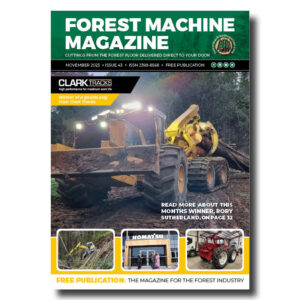Forestry leaders must band together to change public attitudes to spruce trees and commercial forestry, conference delegates heard at the launch of an industry report yesterday (22Nov).
The call came as experts from Tilhill – the UK’s leading forestry services company – and specialist forestry agency GOLDCREST Land & Forestry Group highlighted the fall in tree planting in the past year at the launch of The UK Forest Market Report 2023.*
The report is the most comprehensive publicly available year-on-year record of activity in the UK forestry sector.
Just 13,000 hectares of trees were planted this year, a drop of 7%, and 43% of the national target of 30,000 hectares. While Scotland continued to lead the charge with 8,200 hectares planted – more than two thirds of which were conifers – this was a 27% drop from 10,400ha in 2022. Broadleaf planting amounted to 51% of all UK tree planting.
Xander Mahony, head of forestry investment at Tilhill, said the industry needed to work together to change negative public perceptions about Sitka spruce, the workhorse of the timber industry.
The call came as experts from Tilhill – the UK’s leading forestry services company – and specialist forestry agency GOLDCREST Land & Forestry Group highlighted the fall in tree planting in the past year at the launch of The UK Forest Market Report 2023.*
The report is the most comprehensive publicly available year-on-year record of activity in the UK forestry sector.
Just 13,000 hectares of trees were planted this year, a drop of 7%, and 43% of the national target of 30,000 hectares. While Scotland continued to lead the charge with 8,200 hectares planted – more than two thirds of which were conifers – this was a 27% drop from 10,400ha in 2022. Broadleaf planting amounted to 51% of all UK tree planting.
Xander Mahony, head of forestry investment at Tilhill, said the industry needed to work together to change negative public perceptions about Sitka spruce, the workhorse of the timber industry.
Jon Lambert, partner at Goldcrest, told the conference that people shied away from change but that there was scope for more tree planting. “There is undoubtedly more room for more trees and working with our politicians to provide financial reward for people planting trees is hugely important to the industry. There are many opportunities out there if people want more timber.”
-
That’s a remarkable amount of work hours for a single machine, the Norcar 600 owned by Erkki Rinne is taken well care of, it even has the original Diesel engine.
-
Kieran Anders is a forestry contractor working in the lake district. His work involves hand cutting and extracting timber using a skidder and tractor-trailer forwarder.
-
It is not possible to eliminate chain shot, but there are simple steps that can be taken to reduce the risk.
-
Arwel takes great pride in the fact that the mill has no waste whatsoever, “the peelings are used for children’s playgrounds, gardens and for farm animals in barns in the winter and the sawdust has multiple uses in gardens and farms as well.
-
Timber hauliers need to encourage young blood in, and also look after the hauliers we have, we need make the sector a safe and positive place to work.
FIND US ON
Related Posts
For great advertising rates please email Rab at forestmachinemagazine@mail.com
The report found that commercial forestry values fell for the first time in almost a decade with a 10%-20% drop in the past year.
The report said: “Compared to the rampaging run of forestry as an asset class over the last 17 years, the lagging effect of economic turmoil from the mini budget, the war in Ukraine, and rising interest rates have softened market activity across the board in both afforestation and commercial/amenity woodlands.”
While highlighting the enduring “resilience” of UK forestry, the continuing emergence of new investors and confidence in the long-term future of timber underpinned by the need to replace plastic, steel and concrete with sustainable forest products, the report found that supply tightened, prices dropped and buyers became increasingly selective in the last year. Additionally, demand for timber slowed sharply in the short-term leading to a dramatic reduction in processing volumes.
2023 saw £212m of commercial forestry listings on the open market, up 9%, with two properties accounting for an “extraordinary” 70% of the total value listed for sale and Scotland enjoying a 91% market share. However, the number of listings fell 39% to just 35 properties.
Mr Mahony said: “This continues the £200m observed market size trend into a fourth year. The headline number however, is boosted by two huge assets (Griffin in Perthshire and Glen Shira in Argyll) and flatters a market that was otherwise unusually small.”
Mr Lambert said that most properties brought to the market had still sold but that after a “staggering” run, pricing was down 10-20% depending on quality and location. “Purchasers are generally more cautious than 12 or 18 months ago, leading to longer due diligence periods, an increased demand to rectify ‘blemishes’ before completion and a desire for higher yields.”
He highlighted a continuing demand for good quality planting land but said appropriate sites were hard to find. The total value of planting land listings amounted to £49.9m, down 24%.
In Scotland, average prices for planting land suitable for commercial forestry dropped 22% from £12,800 per gross hectare to £9,900 per gross hectare “in the most significant development across all forest market data this year”.
It was hoped, according to the report, that a “normalisation in commercial planting land prices in Scotland would spur much needed woodland creation, both commercial and native” going forward.
Forest Machine Magazine is written and edited by a forest professional with over 40 years hands on experience. We are dedicated to keeping you informed with all the latest news, views and reviews from our industry.
To support us you can subscribe to our bi-monthly magazine which is delivered to your door from only £15 per year.
Subscribe here
#homeoflogging #writtenbyloggersforloggers #loggingallovertheworld


